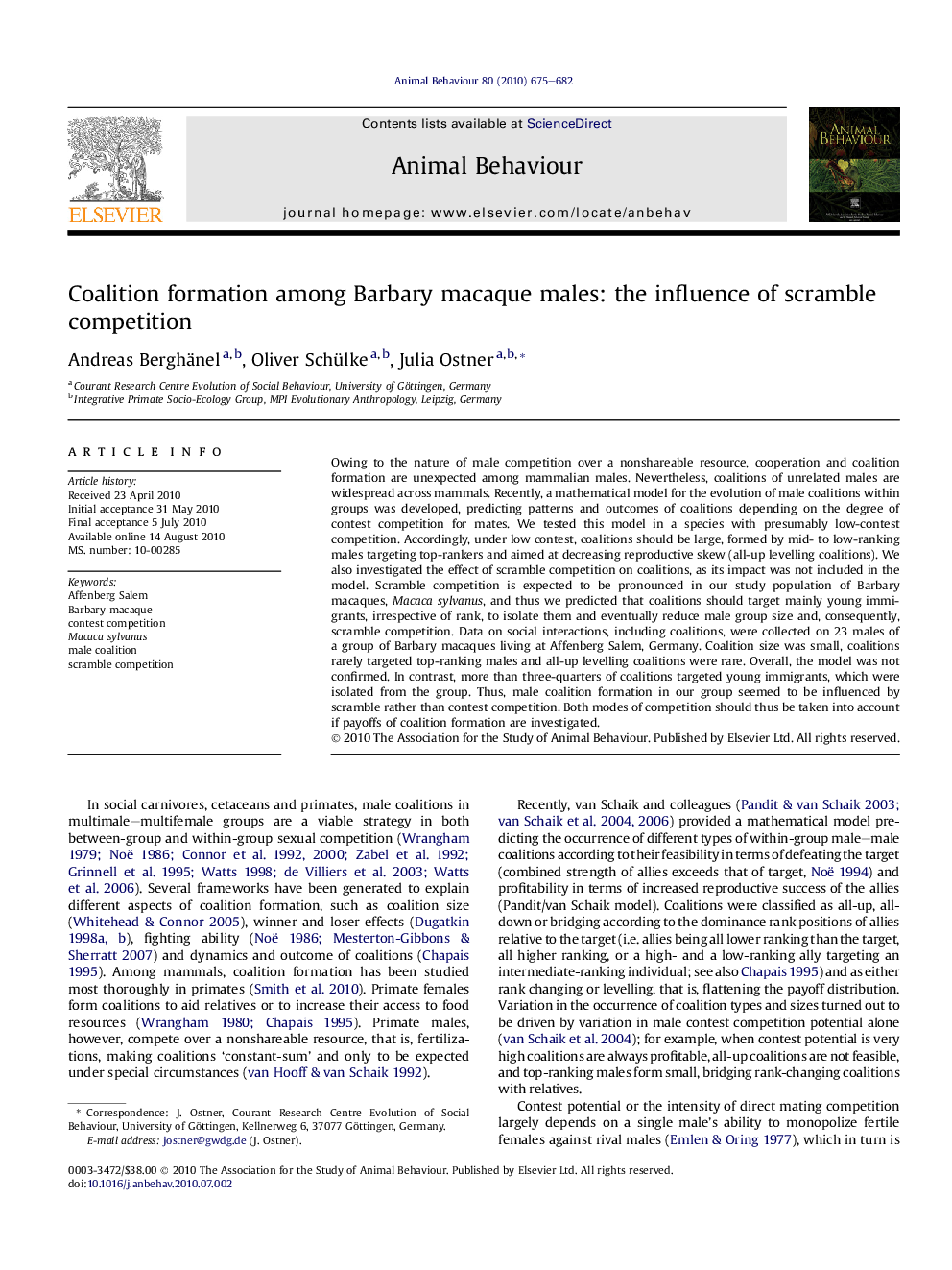| Article ID | Journal | Published Year | Pages | File Type |
|---|---|---|---|---|
| 2417120 | Animal Behaviour | 2010 | 8 Pages |
Owing to the nature of male competition over a nonshareable resource, cooperation and coalition formation are unexpected among mammalian males. Nevertheless, coalitions of unrelated males are widespread across mammals. Recently, a mathematical model for the evolution of male coalitions within groups was developed, predicting patterns and outcomes of coalitions depending on the degree of contest competition for mates. We tested this model in a species with presumably low-contest competition. Accordingly, under low contest, coalitions should be large, formed by mid- to low-ranking males targeting top-rankers and aimed at decreasing reproductive skew (all-up levelling coalitions). We also investigated the effect of scramble competition on coalitions, as its impact was not included in the model. Scramble competition is expected to be pronounced in our study population of Barbary macaques, Macaca sylvanus, and thus we predicted that coalitions should target mainly young immigrants, irrespective of rank, to isolate them and eventually reduce male group size and, consequently, scramble competition. Data on social interactions, including coalitions, were collected on 23 males of a group of Barbary macaques living at Affenberg Salem, Germany. Coalition size was small, coalitions rarely targeted top-ranking males and all-up levelling coalitions were rare. Overall, the model was not confirmed. In contrast, more than three-quarters of coalitions targeted young immigrants, which were isolated from the group. Thus, male coalition formation in our group seemed to be influenced by scramble rather than contest competition. Both modes of competition should thus be taken into account if payoffs of coalition formation are investigated.
